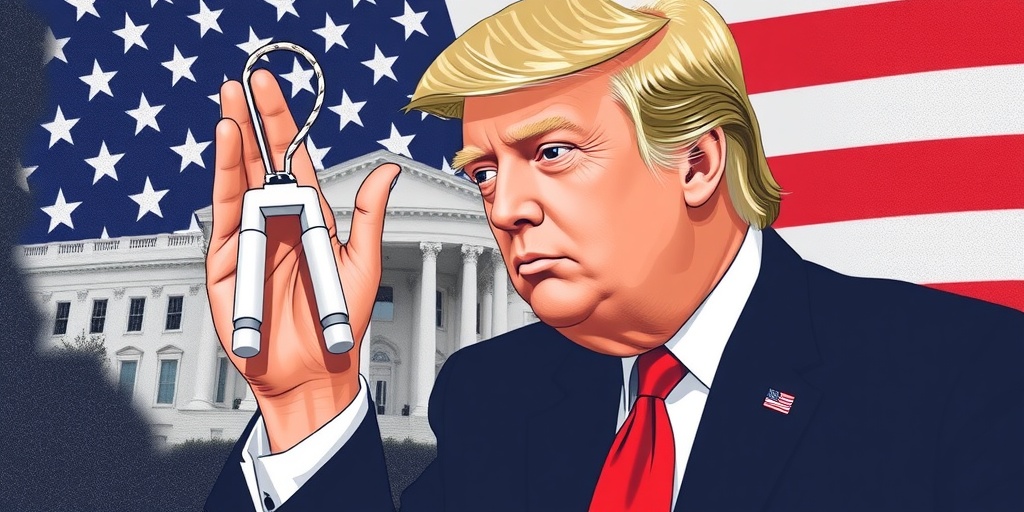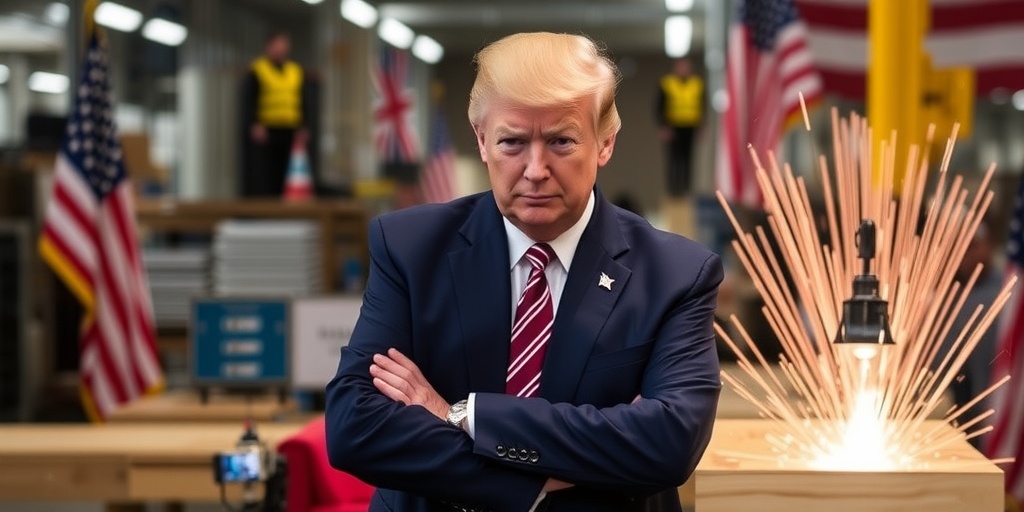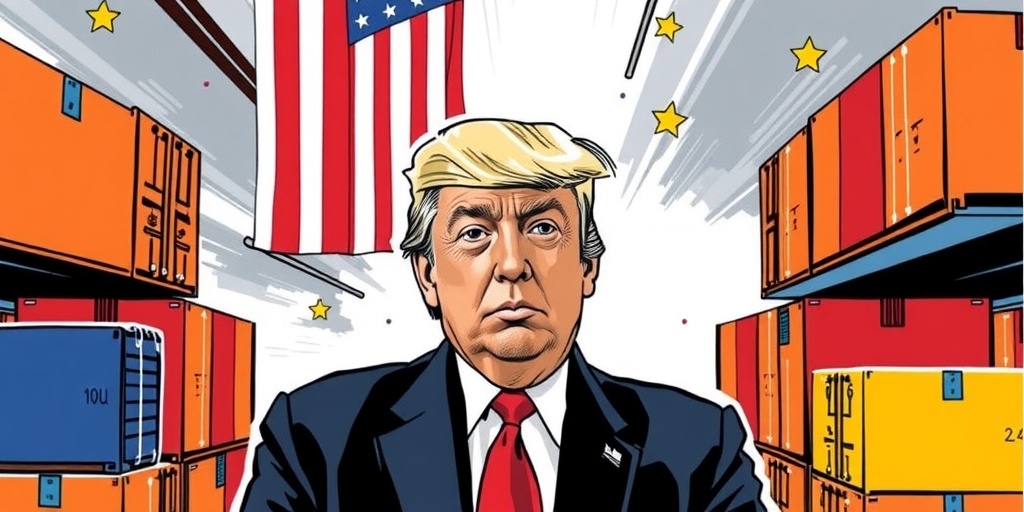Now Reading: Economists Caution Long-Term Risks of Trump’s Science Policies
-
01
Economists Caution Long-Term Risks of Trump’s Science Policies
Economists Caution Long-Term Risks of Trump’s Science Policies

Concerns Arise Over Trump Administration’s Cuts to Scientific Research Funding
Economists and scientists are increasingly alarmed by the Trump administration’s recent policies aimed at reducing federal support for scientific research. These cuts could have far-reaching implications for the nation’s competitiveness, economic growth, and health.
In recent weeks, the administration has made headlines by canceling or freezing billions of dollars in federal grants allocated to researchers through the National Institutes of Health (NIH). Additionally, it has proposed significant reductions in funding for academic medical centers and has launched an initiative, known as the Department of Government Efficiency (DOGE), aimed at reducing the federal workforce, including efforts to dismiss hundreds of employees from the National Science Foundation, an independent federal agency. Furthermore, the administration has made moves to revoke visas for numerous foreign-born students, intensifying concerns about retaining global talent within the United States.
Economists across the political spectrum are worried that these policies threaten to undermine U.S. leadership in crucial fields like artificial intelligence and biomedical research, leading to a decline in workforce productivity, economic health, and overall societal well-being. “Universities are tremendously important engines of innovation,” remarked Sabrina Howell, a professor at New York University who specializes in the intersection of federal support and innovation. She emphasized that cutting funding for research is tantamount to “killing the goose that lays the golden egg.”
Scientists have flagged that these actions risk diminishing the United States’ status as a leader in cutting-edge research and its appeal to top scientific minds globally. As a direct consequence, research institutions have started laying off employees, halting projects, and even canceling clinical trials that were already in progress. Prominent universities, including Harvard and the University of Pennsylvania, have enforced hiring freezes in response to the budget cuts. Meanwhile, countries like France have begun actively recruiting American scientists, positioning themselves as more welcoming environments for innovative talent.
The economic imperatives for sustained investment in scientific research are compelling. Research indicates that every dollar spent on research and development (R&D) can yield up to $5 in economic returns. This figure likely underrepresents the broader societal benefits, which encompass improved health outcomes and increased life expectancy. Benjamin F. Jones, an economist at Northwestern University, articulates this, stating, “From a societal point of view, it’s an incredibly high-return activity that we already do too little of.”
Historical context highlights the importance of government investment in research. The U.S. research and development framework emerged during World War II, with the government funding academic institutions and private companies to advance technology crucial for national defense. This commitment to research persisted through the Cold War and the space race and has since become essential in various fields, including medicine and agriculture.
As indicated in a recent study conducted by the Federal Reserve Bank of Dallas, government investment in R&D has been responsible for at least one-fifth of the productivity growth witnessed in the U.S. since World War II. Andrew Fieldhouse, one of the study’s authors, asserted, “It has had a massive impact on people’s standards of living, fueling economic growth significantly.”
Despite a notable decline in federal investment in science as a portion of the economy since the Cold War, the urgency of reinvigorating support has never been clearer. The NIH, for instance, has suggested capping the rate at which they reimburse universities for indirect costs associated with research. Recent analysis from the National Bureau of Economic Research indicates that such a cap would disproportionately impact successful research institutions, leading to significant funding reductions.
The urgency of maintaining U.S. leadership in emerging technologies, particularly artificial intelligence, cannot be overstated. With American companies currently leading the development of AI technologies—foundationally supported by university research—worry persists about falling behind, especially following the unveiling of DeepSeek, an advanced AI model developed by a Chinese entity, which has been likened to a “Sputnik moment.”
In response to criticisms, White House officials have defended their stance by asserting that the directives to freeze grants and modify funding structures are intended to enhance efficiency rather than diminish research support.
Experts broadly agree that there is ample scope for reforming the federal grants process. Increasing application times and cumbersome administrative requirements have diverted valuable time and resources from researchers who should be focusing on innovation. Critiques have emerged regarding DOGE’s focus on alleged waste and cancellation of projects that do not align with the administration’s political agenda, which could unintentionally stifle scientific exploration.
Furthermore, the domestic immigration landscape is becoming increasingly concerning. Immigrants have historically played a vital role in contributing to scientific advancements in the United States, accounting for a significant percentage of total innovation. Recent studies indicate a marked decrease in the inclination of international students, particularly from China, to pursue studies in the U.S., a trend that predates formal immigration restrictions although signaling a broader perception issue.
As the U.S. navigates these challenging times, experts suggest that maintaining an inviting and supportive environment for scientific inquiry is essential for retaining its position at the forefront of global innovation.
Stay Informed With the Latest & Most Important News
Previous Post
Next Post
-
 01New technology breakthrough has everyone talking right now
01New technology breakthrough has everyone talking right now -
 02Unbelievable life hack everyone needs to try today
02Unbelievable life hack everyone needs to try today -
 03Fascinating discovery found buried deep beneath the ocean
03Fascinating discovery found buried deep beneath the ocean -
 04Man invents genius device that solves everyday problems
04Man invents genius device that solves everyday problems -
 05Shocking discovery that changes what we know forever
05Shocking discovery that changes what we know forever -
 06Internet goes wild over celebrity’s unexpected fashion choice
06Internet goes wild over celebrity’s unexpected fashion choice -
 07Rare animal sighting stuns scientists and wildlife lovers
07Rare animal sighting stuns scientists and wildlife lovers





















